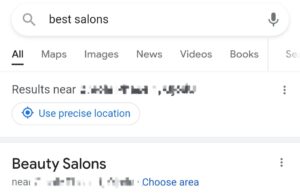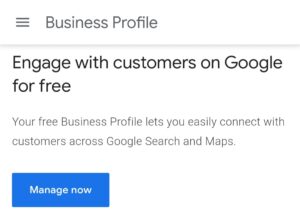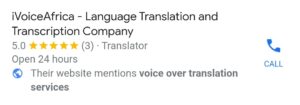As a business owner, your local SEO plan is one of the core pillars of your business. Without it, your business will struggle with visibility in your local area, but when done correctly, it can gain new traction and recognition locally.
Local SEO, on the other hand, isn’t for everyone. So, how do you know if it’s right for you, and if it is, how can you create a solid local SEO plan that attracts visitors and converts? By the end of this article, you’ll know how to create a local SEO plan and implement it effectively.
Do You Need a Local SEO Plan?
Local SEO is search engine optimisation for a specific geographic area. It allows your company to appear in search engine results for local searches. This means that if someone searches for “best salons” in Johannesburg, South Africa, Google will provide a list of salons in that region.

What Type of Business Needs a Local SEO Plan?
Before creating a Local SEO plan, look at the list below to determine if your company fits into any of the categories or has similar characteristics:
- Real Estate
- Bars and Restaurants
- Hotels
- Medical Centres
- Legal Offices and Agencies
- Cosmetics and Beauty Salons
- Pet Supplies and Pet Care Centres
5 Ways to Create a Local SEO Plan
-
Create a Google My Business Account

More than once a week, 78 per cent of consumers search the internet to find information about local businesses. This makes a Google account one of the most effective ways to improve your local SEO plan. To optimise your performance:
- Include all of the necessary information.
- Include your logo, business hours, payment methods accepted, the product or service you sell, and photos
2. Encourage your consumers to leave a review of your company online

Your local SEO strategy must include online reviews. They not only enhance your visibility but also demonstrate your credibility to users. According to the BrightLocal 2017 Local Consumer Review Survey, 98 per cent of customers read online reviews for local businesses, and 89 per cent of customers are “very” or “somewhat” inclined to use a company that replies to all of its online reviews. So as you encourage your customers to leave reviews on your website, ensure you respond to each one.
3. Optimise Your Website Content for Local Keywords
Numerous keyword tools allow you to select the most appropriate keywords based on region and provide keyword correlations. Utilise these tools to determine what your potential clients are seeking and deliver that information to them. The following are a few free keyword tools:
- Google Keyword Planner
- SEMrush magic keyword tool (has limited searches)
- Ubersuggest (has limited searches)
4. Conduct keyword research on your competitors
Competitor keyword research allows you to see what keywords they are ranking for. You must outrank your competition to strengthen your local SEO strategy. SEMrush and Ubersuggest are tools that can assist you with this. It can also help determine where their backlinks originate and establish a more defined plan.
5. Consider Directory Listings
Online directories are a great way to get more exposure for your business. It can also help you get traffic and localised backlinks to your website. But as great as online directories are, you should avoid spammy sites or paying to get a backlink. This can cause serious harm to your business in the long run.
Did you know localising your website is a great way to boost your Local SEO? Contact iVoiceAfrica for your website localisation services and more info about creating a Local SEO plan today!
Here are a few more topics to consider when creating your local SEO plan:
10 reasons to localise your website – if you aren’t convinced about localising your website, here are 10 more reasons.
Understanding SEO and localisation for startups – this post provides a simple understanding of SEO and localisation and their importance for startups.
Identifying and meeting customer needs – this post gives a step-by-step tutorial on how to identify your customers’ needs and helps you stay above your competitors.




